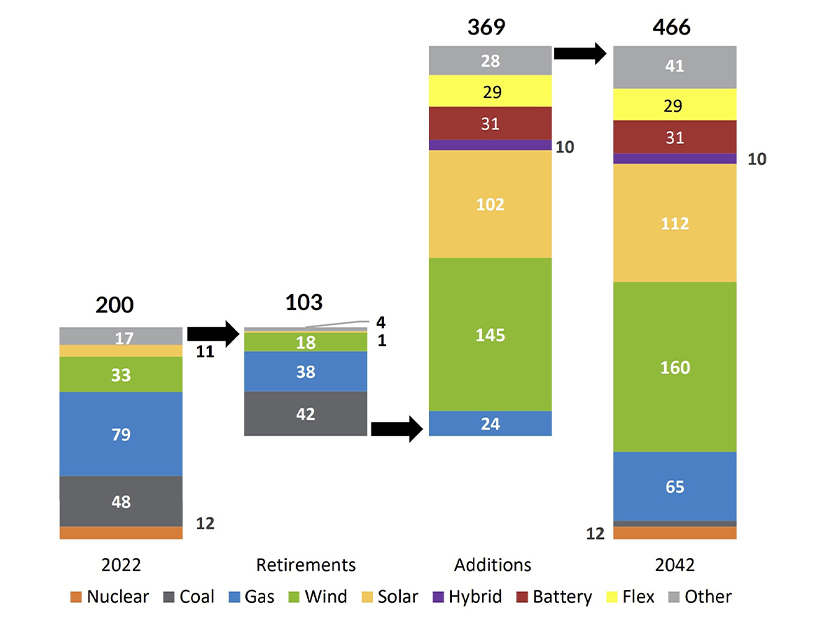
MISO last week laid out more reasons why it needs a second long-range transmission plan (LRTP) portfolio, saying it will connect several hundred gigawatts of new resources over the next 20 years to avoid reliability crises.
The grid operator expects to add 369 GW of new resources, mostly renewable, by 2042. Even with 103 GW of capacity expected to retire from the existing fleet, MISO will have 466 GW of installed capacity. However, only 202 GW of that capacity is accredited; staff assumes a declining effective load-carrying capability for the renewable additions.
During a teleconference Friday with stakeholders, James Slegers, MISO’s senior expansion planning engineer, said the RTO’s middle-of-the-road, 20-year future scenario shows that it needs transmission capacity to manage resource expansion and increased load.
MISO has three transmission planning futures, ranging from conservative to aggressive. The second LRTP cycle is based on the second future, which assumes all states’ climate goals and members’ integrated resource plans are realized.
Staff have said the second portfolio could cost as much as $30 billion. MISO aims to recommend the portfolio during the first half of 2024. (See MISO Says 2nd LRTP Portfolio Still in Flux.)
Slegers said an energy adequacy analysis indicates risks will be most pronounced during the “twilight hours” on hot summer days, when load is still high, solar has dropped off and wind production is low. He said MISO could find itself needing up to an additional 29 GW of flexible resources over what it has now for those three or four hours in 2042 on the most challenging operating days.
Staff said they expect to connect new types of flexible resources to the system, including green hydrogen, long-duration battery storage, small modular nuclear reactors, and reciprocating internal combustion engines. The RTO forecasts 3 GW of offshore wind farms in the Gulf of Mexico will meet Louisiana’s goal of net-zero carbon emissions by 2050.
MISO says the second LRTP’s benefits include avoided load-shedding during extreme weather events, less transmission investment, greater access to capacity and meeting decarbonization goals.
Having completed the latest resource expansion forecasts, staff will now build reliability and economic models into the fall meant to identify beneficial projects.
MISO is also considering hosting a Planning Advisory Committee meeting May 31-June 1 to delve into the footprint’s need for future 765-kV and HVDC lines alongside other transmission technologies. Committee leadership has invited stakeholders to prepare presentations.
MISO will host its next LRTP workshop June 5.


